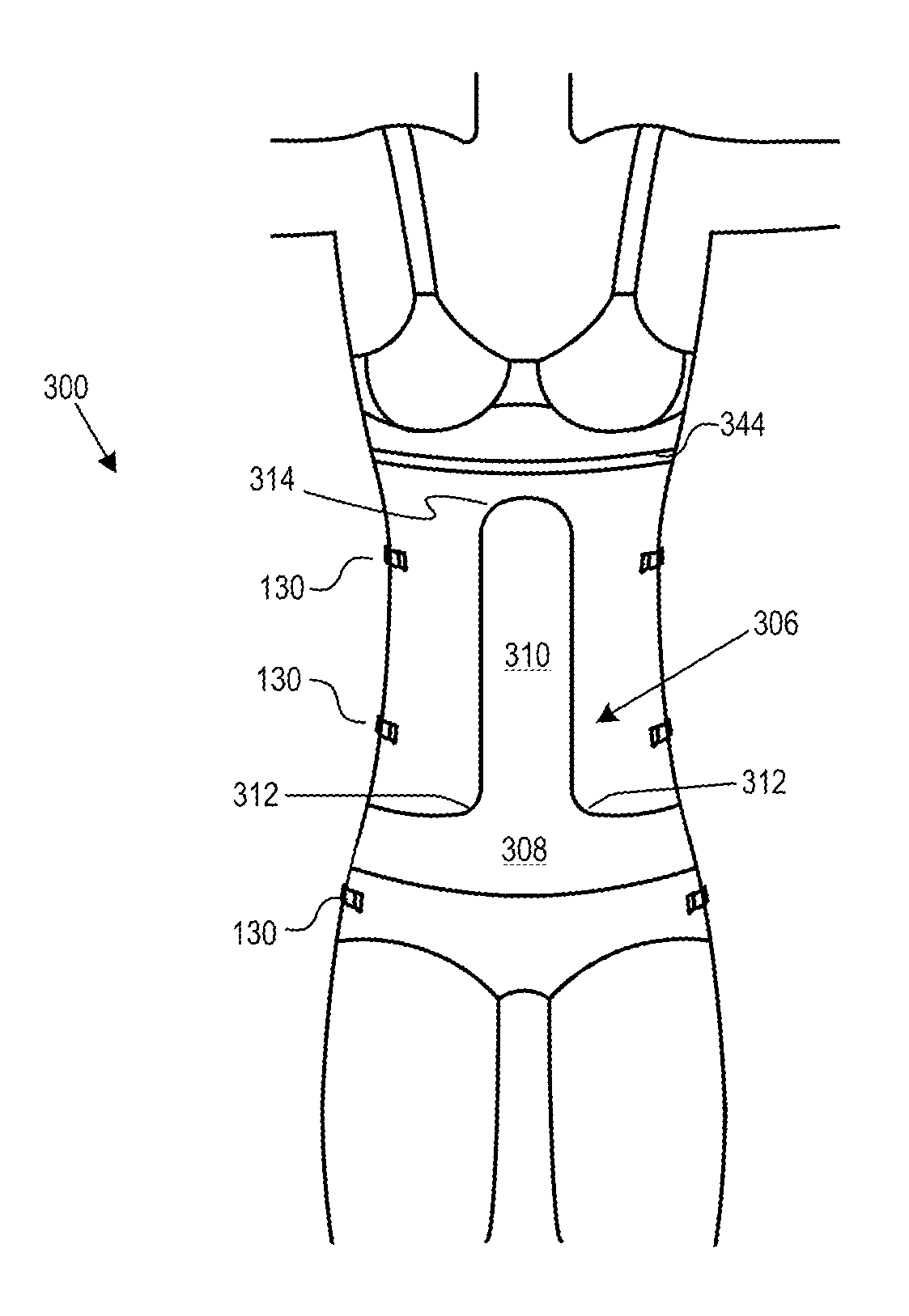Radiation treatment garment-II
a radiation treatment and garment technology, applied in the field of radiation oncology, can solve the problems of difficult to predict accurate radiation values at the skin-air interface, the skin of the perineum and external genitalia often receives unavoidable radiation dose, and the patient's experience is often inconvenient, so as to improve the radiation treatment outcome and improve the experience. the effect of patient experien
- Summary
- Abstract
- Description
- Claims
- Application Information
AI Technical Summary
Benefits of technology
Problems solved by technology
Method used
Image
Examples
Embodiment Construction
[0040]FIGS. 1A and 1B depict respective front and side views of radiation treatment garment 100 in accordance with a first illustrative embodiment of the present invention. Garment 100 is in the form of a pair of “shorts.”
[0041]Garment 100 includes front portion 101, leg portions 102, back portion 103, and waist band 104.
[0042]Much of garment 100, including back portion 103, most of leg portions 102, and some of front portion 101 comprises a fabric that is resilient and elastic, such as a spandex-type fabric (e.g., as used in “compression” shorts, cycling shorts, etc.). The term “compression fabric” is hereinafter used in this disclosure and the appended claims to refer to this spandex-type fabric. An example of a suitable compression fabric is spandex “tricot,” in a matte or other finish, having a composition of about 15%-20% spandex and 85%-80% nylon. Other compositions and materials may suitably be used. Matte tricot is available from Darlington Fabrics Corporation and others. It...
PUM
 Login to View More
Login to View More Abstract
Description
Claims
Application Information
 Login to View More
Login to View More - R&D
- Intellectual Property
- Life Sciences
- Materials
- Tech Scout
- Unparalleled Data Quality
- Higher Quality Content
- 60% Fewer Hallucinations
Browse by: Latest US Patents, China's latest patents, Technical Efficacy Thesaurus, Application Domain, Technology Topic, Popular Technical Reports.
© 2025 PatSnap. All rights reserved.Legal|Privacy policy|Modern Slavery Act Transparency Statement|Sitemap|About US| Contact US: help@patsnap.com



